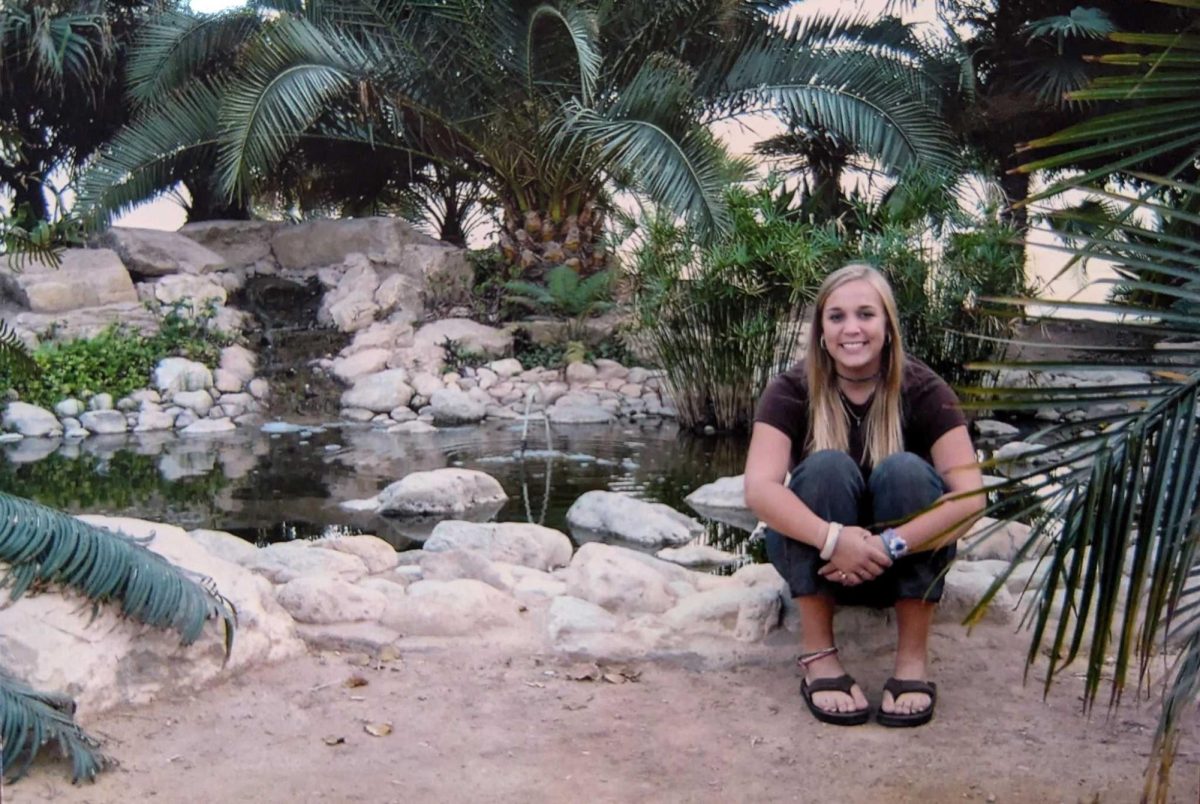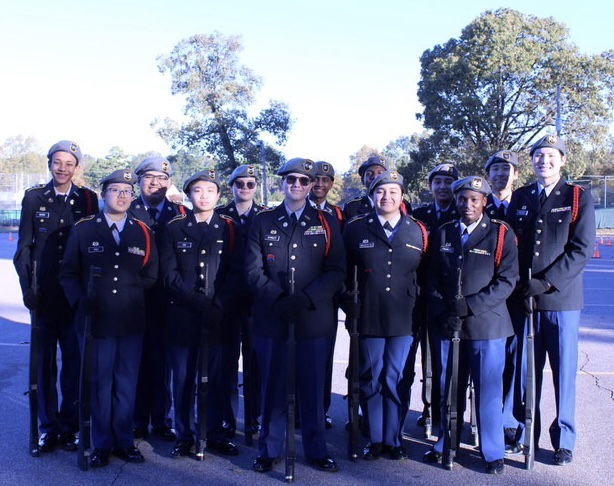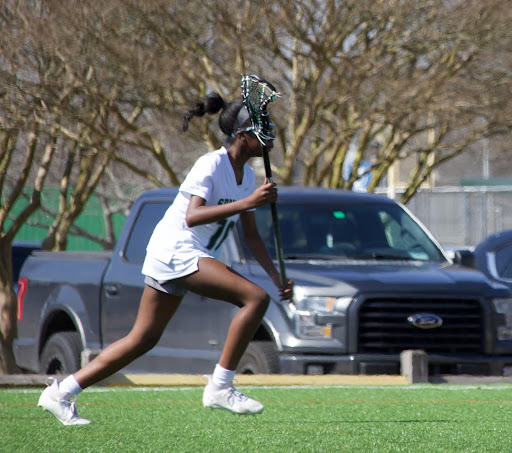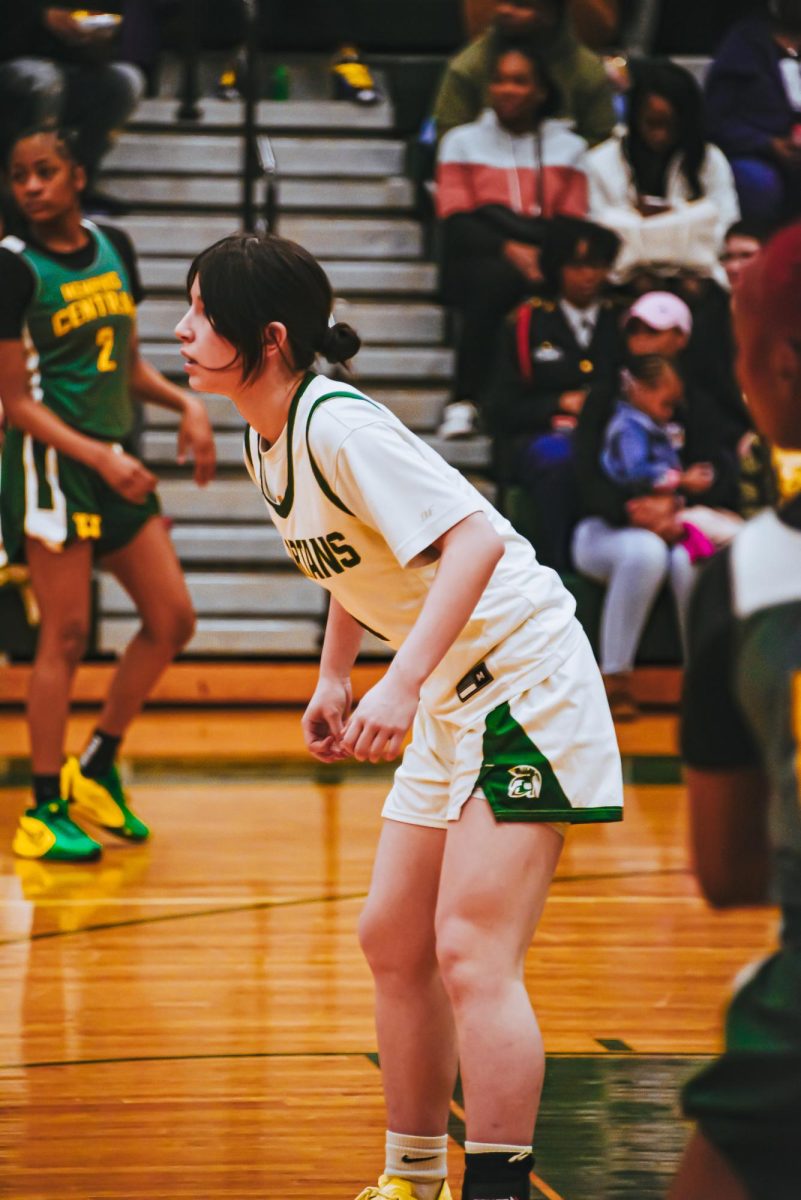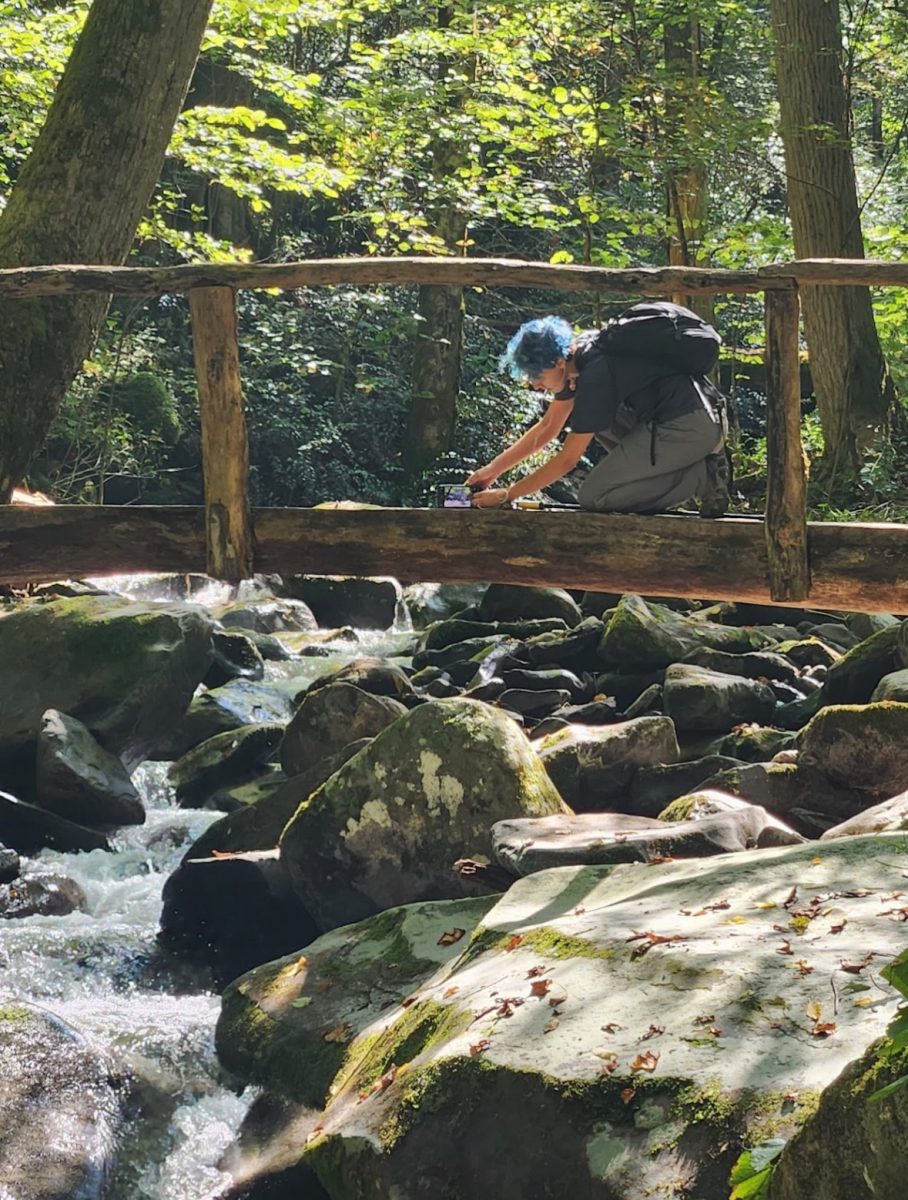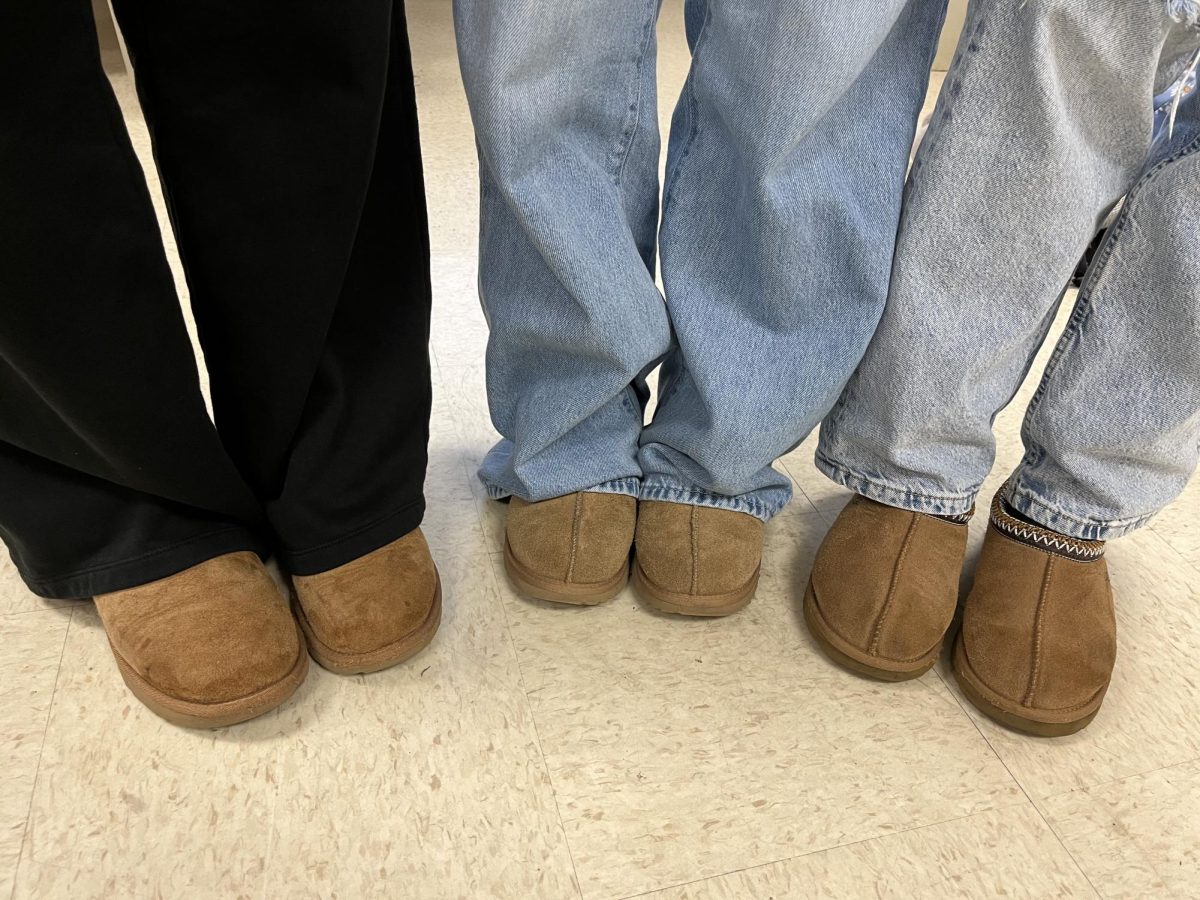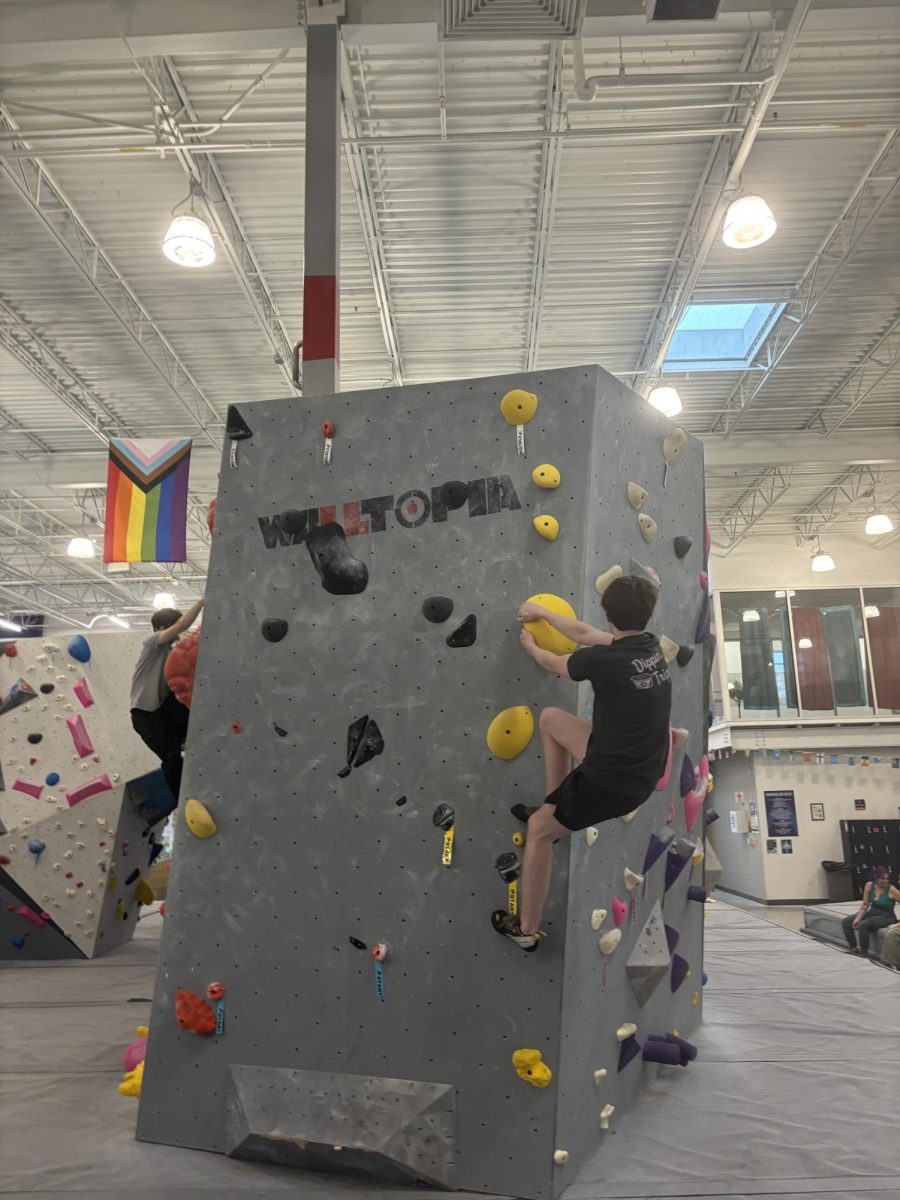Chalk on his hands, Kenneth Harms (12) prepares to tackle a V8 bouldering grade. After discussing the plan, or beta, with Jeff Blumberg (12), he engages in battle with the wall, recruiting strength from his flexor digitorum profundis, latissimus dorsi and core.
Bouldering is a form of free climbing that does not require harnesses or ropes—requiring only your brain, strength, balance and technique.
“Bouldering is the shorter climb where you don’t have any ropes attached to you,” Harms said. “Bouldering is usually about maybe 20 to 25 feet high, and it use[s] a lot more dynamic movement because you can move sideways more.”
Some rock climbing gyms also offer top rope, where one is attached to a rope and can climb over 50 feet upwards. The climber relies on a partner on the ground, who provides them with a belay to ensure they do not fall.
“Top rope, you have to climb to know it,” Harms said. “They’d have stuff more stretched out and just really tight holds. [Bouldering and top rope] are really different because of what you’re allowed to do with each one.”
Both top rope and bouldering have different grades measuring their difficulty. Most climbing gyms offer bouldering from the V0 to V12 grades, with V0 to V3 measured as beginner, V3 to V6 as intermediate, and the rest are graded as advanced. Top rope is measured similarly, measured from 5.6 to 5.13 grades. Beginning rock climbing can seem daunting for some, as there are multitudes of different crimps, techniques and strategies to approach rock climbing.
“I’d say there was definitely a scale curve to it because when you first start, especially on bouldering, there’s some walls that just seem impossible that no human could possibly do,” Blumberg said. “As you progress, you start to learn different grips, you start to trust yourself and you get acclimated to having the endurance necessary to do it. The results are slow, but they are definite.”
Climbing requires more than just strength. Before approaching a top rope or bouldering problem, climbers often discuss the beta with one another, mapping it out in their heads and envisioning the motions through their hands.
“Beta is the type of language within the climbing community,” Harms said. “That language is talking about prepositions and how your body’s supposed to move. It’s like the answer key of the climb.”
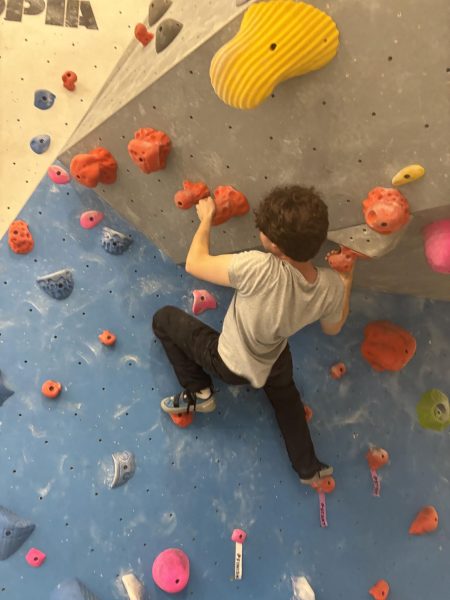
In rock climbing, the struggle to figure out complex bouldering problems helps people to come together. Because of mobile apps like Kaya, which detail specific problems and how people solve them, and general interactions with one another, rock climbing is beginner-friendly and generally welcoming to all.
“You climb by yourself,” Leslie Thornton, Spanish teacher said. “It’s incredible the amount of support you gather when rock climbing. It isn’t a team exercise but at the same time, you have a lot of people around you. You have someone cheering for you, you have people to ask questions like ‘Are those shoes comfortable enough?’ It creates a communication and a community.”
Depending on the choice of gym, rock climbing can be either costly or affordable. Memphis Rox is a nonprofit, community-oriented gym geared towards making climbing more accessible, with options in place to deal with the time and money commitment.
“[Memphis Rox] is a community gym and they go on a pay-what-you-can-afford system,” Blumberg said. “My membership only cost $9 for two months, so in terms of money, it’s not a huge investment because they will provide you with gear. Compared to a commercial gym, the costs can be very expensive. As for time commitment, you can go whenever you want, and honestly, it’s better to space it out.”
Rock climbing offers a lot of accessories, but the most essential are the shoes, which range from $100 to $200. Top rope requires a harness and belay device, which can cost another $200. Some gyms offer rental packages where one can pay a monthly fee to rent gear rather than spending money upfront on personal gear.
From quick bouldering problems to high walls, rock climbing offers more than just a workout. It can be a bonding experience for friends and family, mental exercise or social exercise. The mental application of figuring out problems can be applied to real-life issues; falling is just a way to learn how to deal with failure.
“We are so used to saying you have to grow, metaphorically you have to climb the ladder,” Thornton said. “You have to climb up, and now I’m applying that to my students. I tell my students it’s okay to not get it the first time … just explore it and figure it out on your own. [Rock climbing] is a set of options, pick the one you think is the right one and if it doesn’t happen, it doesn’t happen. If it does, great, and you move forward.”










